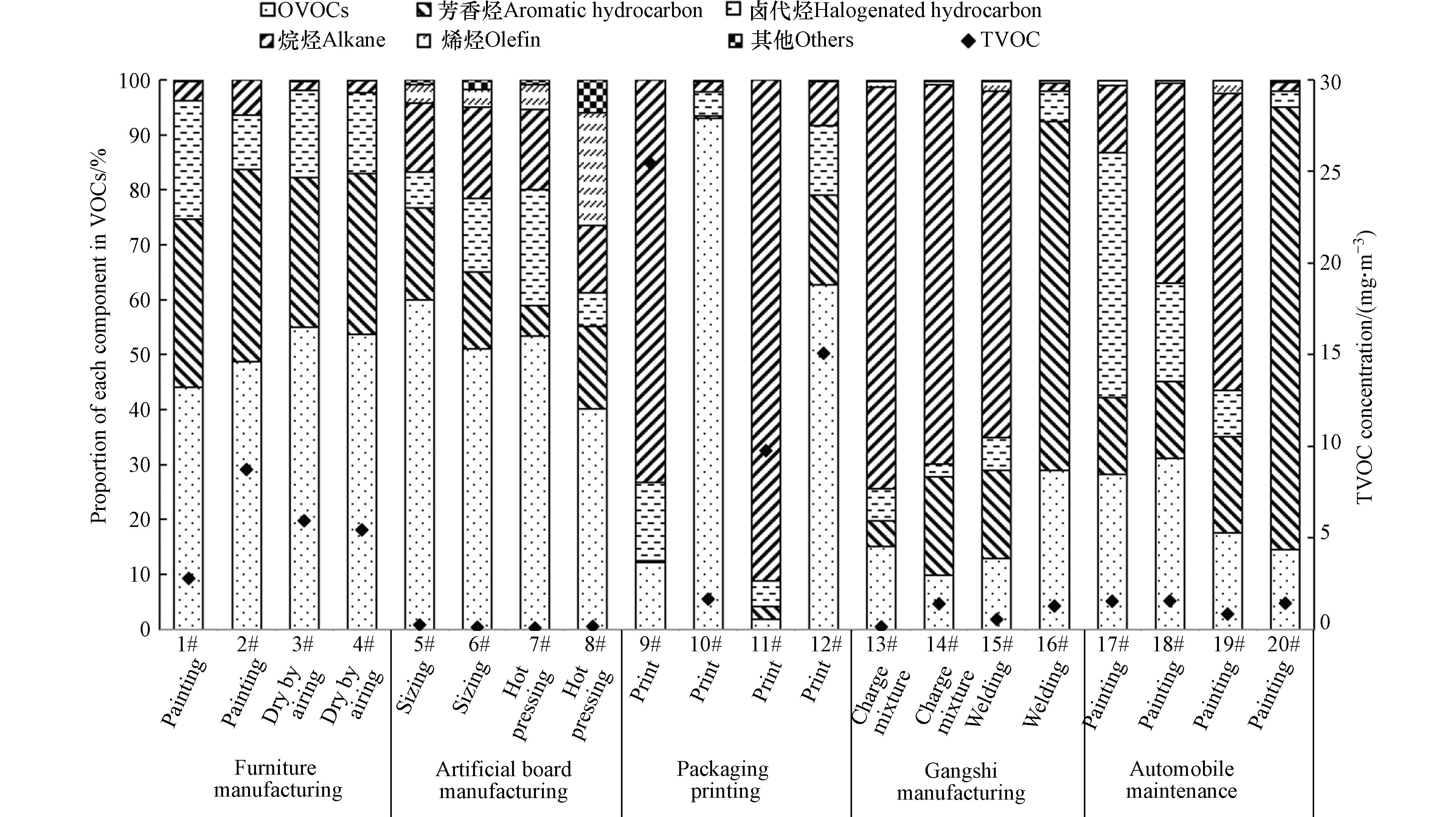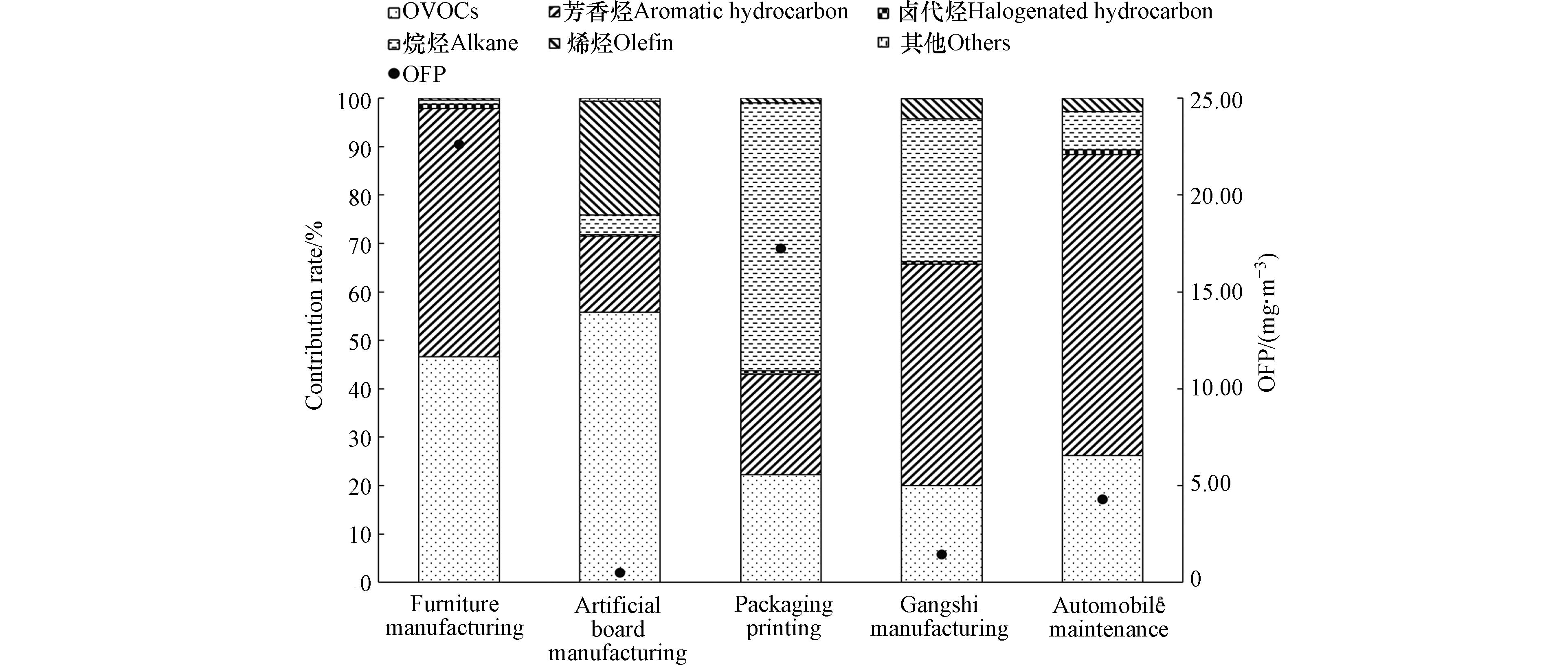纳米银对蒙古黄芪种子和幼苗的毒性研究与数据挖掘分析
Phytotoxicity of AgNPs on Astragalus mongholicus Seeds and Seedlings and Data Mining Analysis
-
摘要: 探讨纳米银(AgNPs)对蒙古黄芪种子萌发和幼苗生长的影响,并基于文献数据讨论AgNPs对单一物种的影响是否与数据挖掘趋势相符合。蒙古黄芪种子置于9个不同浓度的AgNPs溶液中,每日观察并记录种子萌发情况。观察结束后进行萌发和生长指标测定,并基于实验结果和文献数据进行比较分析。结果表明,随着AgNPs浓度升高,蒙古黄芪最终发芽率受到抑制,高浓度时显著降低(P<0.05);浓度为600 mg·L-1和1 000 mg·L-1时平均发芽时间显著高于其他处理组(P<0.05);浓度升高到400~1 000 mg·L-1时,胚根长、子叶长和子叶宽受到抑制,显著低于对照组(P<0.05);胚轴的长度未受到AgNPs浓度变化的影响;叶绿素和氮含量在AgNPs浓度为200 mg·L-1时开始显著降低(P<0.05);与对照组相比,各浓度处理组(除20 mg·L-1外)的鲜质量与干质量均显著减少(P<0.05);幼苗地上部分和地下部分抗氧化酶过氧化氢酶(CAT)、过氧化物酶(POD)和超氧化物歧化酶(SOD)活性变化趋势基本一致。通过计算抑制率表明,600 mg·L-1和1 000 mg·L-1的AgNPs对蒙古黄芪具有毒害作用。总的来说,实验结果部分符合数据挖掘模型趋势。比较几种分析模型发现,隶属函数法分析和主成分分析结果一致,meta分析比冗余分析更适用于单一物种趋势的预测。AgNPs抑制蒙古黄芪种子萌发,低浓度AgNPs对幼苗影响不明显,高浓度严重抑制幼苗生长。Abstract: To explore the influence of silver nanoparticles (AgNPs) on seed germination and seedling growth of A. mongholicus, and to discuss whether the impact of AgNPs on a single species is consistent with the trend of data mining. A. mongholicus seeds were cultured at nine different concentration levels of AgNPs solution. Seed germination was observed and recorded every day, and the parameters of germination and growth were measured after the observation. Based on the experimental results and literature data, the comparative analysis was performed. As the concentration of AgNPs increased, the total germination percentage of A. mongholicus was inhibited, and it decreased significantly at high concentration (P<0.05). The mean of germination time at concentrations of 600 mg·L-1 and 1 000 mg·L-1 was significantly higher than other treatments (P<0.05). When the concentration increased to 400~1 000 mg·L-1, the radicle length, cotyledon length and cotyledon width were significantly inhibited, which were significantly lower than that of the control group (P<0.05). The hypocotyl length wasn't influenced by the change of AgNPs concentration. The contents of chlorophyll and nitrogen began to decrease significantly when the AgNPs concentration was at 200 mg·L-1 (P<0.05). Compared with the control group, the fresh weight and dry weight of each treatment group (except 20 mg·L-1) were significantly reduced (P<0.05). The antioxidant enzymes activity trends of catalase (CAT), peroxidase (POD) and superoxide dismutase (SOD) of aboveground and underground portions of seedlings were basically the same. Calculation of the inhibition rate showed that AgNPs of 600 mg·L-1 and 1 000 mg·L-1 had toxic effects on A. mongholicus. In general, the experimental results were partially consistent with the trend of data mining models. Comparing several analysis models, it was found that the results of membership function analysis and principal component analysis were consistent, and meta analysis was more suitable for single species trend prediction than redundancy analysis. AgNPs inhibited the germination of A. mongholicus seeds, low concentration AgNPs had little effect on seedlings, and high concentration seriously inhibited seedling growth.
-
Key words:
- AgNPs /
- A. mongholicus /
- seed germination /
- seedling physiological characteristics /
- growth inhibition /
- data mining
-
挥发性有机物(volatile organic compounds,VOCs)是臭氧(O3)生成的重要前体物[1 − 7],是我国“十四五”期间防治的重点污染物.当前,我国大气中VOCs的来源类别多、排放组分复杂,其中工业源排放VOCs占人为源排放总量的60%[8],且不同VOCs排放源会排放不同类型的VOCs物种,进而对O3的形成具有不同程度的影响效应[9 − 13].欧美等发达国家和地区较早开展了大量的VOCs源成分谱特征研究[14 − 16],建立了本地化的源成分谱,为深入推进VOCs的研究奠定了扎实的基础数据.近年来,国内学者围绕不同行业、不同工艺VOCs排放源成分谱开展了广泛的研究,区域主要集中在珠三角[17 − 18]、北京[19 − 21]、长三角[22 − 24]、成渝地区[25 − 27]等地,结果显示,受不同VOCs原辅材料、生产工艺流程、末端治理方式之间差异的影响,各项研究结果体现的VOCs排放特征及特征因子并不完全相同[28],对指导城市VOCs的精准管控具有一定的局限性. 因此,建立本地化的VOCs排放源成分谱,不仅有利于掌握VOCs排放特征及特征因子,更有利于识别和量化不同污染源的污染贡献,这对实施城市VOCs的精细化管控具有十分重要的意义[29].
近年来,广西O3浓度不降反升,大气首要污染物的结构也发生了显著变化,以PM2.5为首要污染物的污染天占比由2015的93.8%下降至2022年的24.0%,而以O3为首要污染物的污染天占比由2015年的6.2%显著上升至2022的76.0%,O3污染已演变成为制约广西环境空气质量持续改善的关键因素.当前,国内对O3生成重要前体物VOCs排放源成分谱特征的研究,主要集中在经济发达地区,然而广西属于经济相对欠发达地区,对VOCs的认识尚不足、排放底数不清、无组织排放突出、治理正处于瓶颈期.
本研究选取了VOCs无组织排放突出、分布数量多、排放比重大的家具制造、人造板制造、包装印刷、岗石制造、汽车维修等5个重点行业作为典型行业进行研究.旨在通过对典型行业VOCs浓度水平、源成分谱特征及其臭氧生成潜势进行深入探究,建立典型行业本地化的VOCs源成分谱,填补广西研究空白,以期为推进VOCs的精细化管控、深入打好O3污染防治攻坚战提供科技支撑.
1. 材料与方法(Materials and methods)
1.1 样品采集
2023年7—9月期间,于玉林、贺州、河池等城市选取典型涉VOCs排放行业企业进行样品采集,主要包括家具制造、人造板制造、包装印刷、岗石制造、汽车维修等5个典型行业,每个典型行业选取4家企业,共采集样品20组,主要针对企业涉VOCs无组织排放突出环节开展样品采集,详见表1.
表 1 各行业企业VOCs采集信息Table 1. VOCs collection information of enterprises in various industries行业Industry 企业编号Enterprise ID 排放环节Emission process 采样点位Sampling points 治理设施情况Situation of governance facilities 家具制造 1# 喷漆 喷漆车间 无设施,无组织排放. 2# 喷漆 喷漆车间 水帘,无组织排放. 3# 晾干 晾干车间 水帘,无组织排放. 4# 晾干 晾干车间 无设施,无组织排放. 人造板制造 5# 施胶 施胶车间 无设施,无组织排放. 6# 施胶 施胶车间 无设施,无组织排放. 7# 热压 热压车间 无设施,无组织排放. 8# 热压 热压车间 无设施,无组织排放. 包装印刷 9# 印刷 印刷车间 无设施,无组织排放. 10# 印刷 印刷车间 RTO,部分印刷设备无集气罩,无组织排放. 11# 印刷 印刷车间 光氧活性炭,印刷设备无集气罩,无组织排放. 12# 印刷 印刷车间 无设施,无组织排放. 岗石制造 13# 配料 配料车间 喷淋塔,无组织排放. 14# 配料 配料车间 喷淋塔,无组织排放. 15# 固化 配料车间 喷淋塔,无组织排放. 16# 固化 配料车间 喷淋塔,无组织排放. 汽车维修 17# 喷漆 喷漆车间 光氧活性炭,无组织排放. 18# 喷漆 喷漆车间 无设施,无组织排放. 19# 喷漆 喷漆车间 光氧活性炭,无组织排放. 20# 喷漆 喷漆车间 光氧活性炭,无组织排放. 采样前,参考USEPA推荐的TO-15方法[30]清洗苏玛罐,清洗气体为高纯氮气,使用Entech300A清罐仪对苏玛罐进行清洗、抽真空,并进行气密性检查和抽样空白实验.采样过程中,使用3.2 L苏玛罐(Entech Instruments Inc.,USA)进行负压真空采样,将采样口放置在生产车间无组织排放旁,逐步打开采样阀,待苏玛罐内外气压相等时可完成采样,采样时长约5 min.采样后,拧紧采样阀、贴好标签,将苏玛罐进行常温保存,送回实验室进行分析.
1.2 分析方法
所采集的苏玛罐样品,采用气相色谱/质谱相结合的方法进行检测.利用电制冷超低温富集浓缩技术对VOCs进行冷冻捕集,通过双色谱柱分离后分别进入氢离子化火焰检测器(FID)和质谱(MS)进行检测,其中,13种C2—C5化合物,通过PLOT-Al2O3色谱柱(15 m×0.32 mmID×3 μm,J&W Scientific,USA)分离后,使用氢火焰离子化检测器进行检测.其余85种化合物(间-二甲苯和对-二甲苯未能分开,标记为“间/对-二甲苯”)通过DB624色谱柱(60 m×0.25 mmID×1.4 μm,J&W Scientific,USA)分离后使用单四极杆质谱在选择性离子扫描模式下检测(EI源,70 eV)[31],共检测VOCs物种115种,包括含氧VOC(OVOCs)21 种,芳香烃17 种,卤代烃35 种,烷烃29 种,烯烃11 种,其他2 种.完整的分析过程包括:样品采集、冷冻捕集、加热解析、GC-MS/FID分析、仪器加热反吹.
1.3 质量控制与保障
为保障分析数据质量,采样前对苏玛罐进行清洗,检验合格后再进行样品采集.正式分析前,基于PAMS混合标气(Linde Co.,Germany)、EPATO-15OVOCs和卤代烃混合标气(Spectra Gases Inc.,USA)对仪器进行多点校正,同时使用内标物质对质谱检测部分进行质控,确保校正曲线R2≧0.995.分析时,采用电制冷机制冷,温度可达-150 ℃以下,可浓缩富集C2—C12碳氢化合物、卤代烃及含氧有机物等,保证目标化合物有效捕集,满足高挥发性化合物的捕集需要,并且进行实验室空白分析,确保仪器运行平稳,检测数据准确.
1.4 源成分谱的建立
样品分析后,得到不同行业企业VOCs浓度水平,在建立VOCs源成分谱时,采用各VOCs组分质量浓度占总VOCs质量浓度的百分数来表征各源样品的VOCs成分谱[27],并对相同行业的企业进行归一化求平均值处理,得出不同行业VOCs排放源成分谱.
1.5 臭氧生成潜势计算
本研究参考Carter等[32 − 34]研究的MIR系数,采用臭氧生成潜势(ozone formation potential,OFP)的方法,定量评估各行业排放VOCs对O3生成的潜在贡献.OFP为某VOCs化合物环境浓度与该VOCs的最大反应增量系数(maximum incremental reactivity,MIR)的乘积,计算公式为:
stringUtils.convertMath(!{formula.content}) (1) 式中,OFPij表示计算得到的第j个源排放的第i个VOCs组分的臭氧生成潜势;[VOCs]ij表示第j个行业排放的第i个 VOCs物种的质量浓度(μg·m−3);MIRi表示该 VOCs在O3最大增量反应中O3的形成系数(无量纲),而各行业对臭氧的总生成潜势如下:
stringUtils.convertMath(!{formula.content}) (2) 式中,OFPj表示最终计算得到的第j种行业所排放VOCs的总生成潜势.
2. 结果与讨论(Results and discussion)
2.1 VOCs浓度排放水平
不同行业企业各环节VOCs浓度及组成如图1所示,包装印刷行业VOCs的浓度相对最高(12.98 mg·m−3),是其余4个行业的2—86倍,其次分别为家具制造(5.72 mg·m−3)、汽车维修(1.34 mg·m−3)、岗石制造(0.84 mg·m−3)、人造板制造(0.15 mg·m−3)行业.但由于采样是在无组织排放的源头进行,VOCs浓度与生产规模的大小、车间工艺、原辅料种类等因素密切相关,因此该处浓度水平仅作为内部横项比较参考,与实际大气浓度有所区别,更有价值的是不同典型行业VOCs组成的相对量的比较. 从不同行业企业的排放环节和VOCs组成来看,家具制造行业排放主要集中在喷漆、晾干环节,企业1#—4#均以OVOCs和芳香烃为主,占比分别为44.13%、48.75%、55.01%、53.69%和30.59%、34.99%、27.17%、29.20%,组成较为一致;人造板制造行业排放主要集中在施胶、热压环节,企业5#—8#均以OVOCs为主,占比分别为59.92%、51.04%、53.40%、40.10%,组成较为一致;包装印刷行业排放主要集中在印刷环节,企业9#、10#均以烷烃为主,占比分别为73.24%、91.07%,企业10#—11#均以OVOCs为主,占比分别为92.99%、62.68%;岗石制造行业排放主要集中在配料、固化环节,企业13#—15#均以烷烃为主,占比分别为73.08%、68.99%、62.96%,企业16#的VOCs组成有所差异,以芳香烃为主,占比为63.61%;汽车维修行业排放主要集中在喷漆环节,各企业VOCs组成略有所差异,企业17#以OVOCs、卤代烃为主,占比分别为28.18%、44.63%,企业18#、19#均以OVOCs和烷烃为主,占比分别为31.17%、36.41%和17.58%和54.08%,企业20#均以芳香烃为主,占比为80.45%. 可见,相同行业中各企业在VOCs的组成上总体较为一致,但由于受原辅材料、生产工艺、废气处理方式等因素的影响,不同企业在VOCs的构成比率上略有差异.
2.2 VOCs源成分谱特征
2.2.1 不同行业VOCs排放源成分谱分析
通过相同行业企业VOCs组成进行归一化处理,得出不同行业本地化的VOCs排放源成分谱,如图2所示.对比不同行业VOCs组成发现,不同行业VOCs组成存在明显差异.其中,家具制造行业以OVOCs(50.98%)、芳香烃(31.05%)为主,其次为卤代烃(13.97%),烷烃(3.83%)、烯烃(0.14%)、其他(0.03%)占比相对最低;人造板制造行业以OVOCs(52.05%)为主,其次为芳香烃(14.32%)、烷烃(13.53%)、卤代烃(9.64%)、烯烃(8.07%),其他(2.39%)占比相对最低;包装印刷行业以烷烃(55.37%)、OVOCs(27.51%)为主,其次为卤代烃(11.63%)、芳香烃(5.35%)、烯烃(0.12%),其他(0.02%)占比相对最低;岗石制造行以烷烃(42.43%)、芳香烃(34.46%)为主,其次为OVOCs(17.82%)、卤代烃(4.30%)、烯烃(0.76%),其他(0.23%)占比相对最低;汽车维修行业以芳香烃(32.25%)、OVOCs(23.76%)、烷烃(22.95%)、卤代烃(20.09%)为主,其次为烯烃(0.85%)、其他(0.10%)占比相对最低.
2.2.2 不同行业VOCs排放源成分谱对比
不同行业VOCs排放源成分谱对比如见表2所示,通过对比同一行业国内不同地区的VOCs组成发现,本研究中,家具制造行业与成都市[26]VOCs主要种类相近,均以OVOCs(50.98%和38.00%)、芳香烃(31.05%和50.00%)为主,但构成比率上差异明显,这可能与油漆品种、生产工艺的差异有关. 人造板制造行业与广西[35]VOCs主要种类相近,OVOCs(52.05%和89.04%)占比均为最高,以醛类物质为主,与生产过程中使用脲醛树脂作为胶粘合剂的实际情况相吻合.包装印刷行业与长沙市[36]VOCs主要种类相近,本研究以OVOCs(27.51%)、烷烃(55.37%)为主,参考文献以OVOCs(74.10%)、烷烃(10.50%)为主,但构成比率上差异明显,这可能是由于油墨种类、印刷工艺、治理水平等差异所导致. 岗石制造行业与广东[37]VOCs主要种类相近,本研究以芳香烃(34.46%)、OVOCs(17.82%)、烷烃(42.43%)为主,参考文献以芳香烃(78.90%)、OVOCs(13.39%)为主,但构成比率上差异明显,这可能由于生产工艺的差异所导致.汽车维修行业与荆州市[29]VOCs主要种类相近,本研究以OVOCs(23.76%)、芳香烃(32.25%)、卤代烃(20.09%)、烷烃(22.95%)为主,参考文献汽车制造行业以芳香烃(11.00%)、卤代烃(70.20%)、烷烃(17.00%)为主,但构成比率上差异明显,这可能由于所使用的油漆和生产工艺不同所导致. 通过对比发现,相同行业在国内不同地区VOCs的主要种类相近,但构成比率上差异明显.
表 2 不同行业VOCs排放源成分谱对比(%)Table 2. Comparison of VOCs emission source composition spectra in different industries(%)行业类型Industry type OVOCsOxygen containing volatile organic compounds 芳香烃Aromatic hydrocarbon 卤代烃Halogenated hydrocarbon 烷烃Alkane 烯烃Olefin 其他Other 数据来源Data sources 家具制造 50.98 31.05 13.97 3.83 0.14 0.03 本研究 人造板制造 52.05 14.32 9.64 13.53 8.07 2.39 本研究 包装印刷 27.51 5.35 11.63 55.37 0.12 0.02 本研究 岗石制造 17.82 34.46 4.30 42.43 0.76 0.23 本研究 汽车维修 23.76 32.25 20.09 22.95 0.85 0.10 本研究 家具制造 38.00 50.00 — — — — 成都市[26] 汽车制造 — 11.00 70.20 17.00 0.30 0.10 荆州市[29] 人造板制造 89.04 0.61 9.94 0.35 0.03 0.03 广西[35] 包装印刷 74.10 — — 10.50 14.40 — 长沙市[36] 岗石制造 13.39 78.90 5.37 1.51 0.67 0.15 广东[37] 表面涂装 17.90 38.90 — 26.70 — — 大连市[38] 制药行业 — 11.60 63.70 15.50 — — 大连市[38] 2.2.3 不同行业VOCs排放特征物种分析
不同行业VOCs排放源成分谱以及占比排名前十的物种,分别如图3、表3所示,通过占比分析,提出不同行业排放优势物种.其中,家具制造行业以己醛(39.62%)、乙酸乙酯(8.03%)、1,2-二氯丙烷(7.42%)、1,2-二氯乙烷(6.91%)、邻-二甲苯(6.21%)、间/对-二甲苯(5.95%)为主,合计占比74.13%,其中己醛、乙酸乙酯、邻-二甲苯、间/对-二甲苯等为涂料和稀释剂的典型组分,表明家具制造行业排放特征与所使用的原辅料高度相关.人造板制造行业以丙酮(11.95%)、乙醛(10.93%)、异丙苯(5.66%)、二氯甲烷(5.29%)、己醛(5.22%)、乙烯(4.79%)、乙酸乙酯(4.52%)为主,合计占比为57.42%,主要为OVOCs.本研究人造板制造行业与覃海丽等[35]对广西人造板制造行业无组织排放的结果相近,主要特征物种同为二氯甲烷、丙酮等物种.包装印刷行业以乙酸乙酯(26.02%)、异丙醇(11.38%)、2-甲基己烷(7.53%)、2,3-二甲基戊烷(5.40%)、3-甲基己烷(4.40%)、二氯甲烷(4.31%)为主,合计占比为59.03%,主要为OVOCs、烷烃.岗石制造行业以正戊烷(21.49%)、苯乙烯(20.82%)、异戊烷(10.43%)、丙烷(4.61%)为主,合计占比为57.34%,特别是苯乙烯,是生产过程中使用到的主要原辅料,与周咪[37]等研究结果高度一致,可见特征物种与原辅料的种类密切相关.汽车维修行业喷漆环节排放的VOCs物种以己醛(13.94%)、1,2-二氯乙烷(10.09%)、间/对-二甲苯(9.84%)、丙烷(8.32%)、邻-二甲苯(7.29%)、二氯甲烷(7.09%)为主,合计占比为56.58%.
表 3 各行业VOCs源成分谱占比排名前十物种比较Table 3. Comparison of top ten species in VOCs source composition spectra by industry行业Industry VOCs主要排放物种Main species of VOCs emissions 家具制造 己醛(39.62%)、乙酸乙酯(8.03%)、1,2-二氯丙烷(7.42%)、1,2-二氯乙烷(6.91%)、邻-二甲苯(6.21%)、间/对-二甲苯(5.95%)、乙苯(4.57%)、3-乙基甲苯(2.76%)、正辛烷(2.73%)、1,2,4-三甲苯(2.09%) 人造板制造 丙酮(11.95%)、乙醛(10.93%)、异丙苯(5.66%)、二氯甲烷(5.29%)、己醛(5.22%)、乙烯(4.79%)、乙酸乙酯(4.52%)、丙烯醛(3.65%)、苯甲醛(2.78%)、丙醛(2.64%) 包装印刷 乙酸乙酯(26.02%)、异丙醇(11.38%)、2-甲基己烷(7.53%)、2,3-二甲基戊烷(5.40%)、3-甲基己烷(4.40%)、二氯甲烷(4.31%)、正己烷(3.79%)、甲基环己烷(3.60%)、正庚烷(3.41%)、1,2-二氯乙烷(2.82%) 岗石制造 正戊烷(21.49%)、苯乙烯(20.82%)、异戊烷(10.43%)、丙烷(4.61%)、正癸烷(3.70%)、苯甲醛(3.39%)、丁酮(3.37%)、正十二烷(2.62%)、异丁烷(2.59%)、丙酮(2.27%) 汽车维修 己醛(13.94%)、1,2-二氯乙烷(10.09%)、间/对-二甲苯(9.84%)、丙烷(8.32%)、邻-二甲苯(7.29%)、二氯甲烷(7.09%)、乙苯(5.45%)、正丁烷(4.22%)、甲苯(4.08%)、异丁烷(2.66%) 2.3 臭氧生成潜势分析
2.3.1 不同行业各类VOCs臭氧生成潜势分析
由于不同VOCs物种化学活性各异,因此生成臭氧的潜能也不尽相同[33 − 34,39],其对臭氧的潜在影响效应不一致.为此,在前文分析不同行业VOCs排放源成分谱及优势物种的基础上,采用最大增量反应活性法(MIR),基于公式(1)和(2)估算了5个典型行业各种类VOCs的臭氧生成潜势及贡献率,如图4所示.结果表明,从行业总臭氧生成潜势来看,家具制造(22.62 mg·m−3)>包装印刷(17.24 mg·m−3)>汽车维修(4.29 mg·m−3)>岗石制造(1.44 mg·m−3)>人造板制造(0.50 mg·m−3),家具制造行业TVOC浓度虽然不是最高,但由于其排放的物种活性强,致使OFP值最高,家具制造行业是未来需重点推进治理的行业.从不同行业各类VOCs的臭氧生成贡献率来看,本研究调查的5个行业中,家具制造行业贡献以OVOCs(46.64%)、芳香烃(51.29%)为主;人造板制造行业贡献以OVOCs(55.77%)、烯烃(23.55%)为主;包装印刷行业贡献以OVOCs(22.21%)、芳香烃(20.73%)、烷烃(55.34%)为主;岗石制造行业贡献以OVOCs(19.96%)、芳香烃(45.81%)、烷烃(29.52%)为主;汽车维修行业贡献以OVOCs(26.15%)、芳香烃(62.24%)为主,是今后O3污染防治中需重点防控的VOCs种类.
2.3.2 不同行业VOCs物种臭氧生成潜势分析
通过分析不同行业对OFP贡献排名前十的VOCs物种及贡献率,详见表4,提出各行业本地化的O3污染防控关键物种.结果显示,家具制造行业贡献以己醛(44.21%)、邻-二甲苯(12.89%)、间/对-二甲苯(12.37%)为主,已醛贡献率最高;人造板制造行业贡献以乙醛(23.86%)、乙烯(13.92%)、己醛(7.63%)、丙烯醛(7.46%)为主;包装印刷行业贡献以2-甲基己烷(9.76%)、甲苯(9.18%)、2,3-二甲基戊烷(7.71%)、异丙醇(6.09%)、甲基环己(5.59%)为主;岗石制造行业贡献以苯乙烯(29.27%)、异戊烷(14.19%)、正戊烷(6.92%)、乙醛(6.79%)、间/对-二甲苯(5.43%)为主,特别是苯乙烯,是刚石制造行业OFP贡献率最高的物种;汽车维修行业贡献以间/对-二甲苯(24.61%)、己醛(19.48%)、邻-二甲苯(18.18%)为主;以上物种是今后O3污染防治中需重点防控的VOCs关键物种.
表 4 不同行业对OFP贡献排名前十的VOCs物种及贡献率(%)Table 4. Top 10 VOCs species and contribution rates in different industries contributing to OFP(%)家具制造Furniture manufacturing 人造板制造Artificial board manufacturing 包装印刷Packaging printing 岗石制造Gangshi manufacturing 汽车维修Automobile maintenance VOCs物种 贡献率/% VOCs物种 贡献率/% VOCs物种 贡献率/% VOCs物种 贡献率/% VOCs物种 贡献率/% 己醛 44.21 乙醛 23.86 2-甲基己烷 9.76 苯乙烯 29.27 间/对-二甲苯 24.61 邻-二甲苯 12.89 乙烯 13.92 甲苯 9.18 异戊烷 14.19 己醛 19.48 间/对-二甲苯 12.37 己醛 7.63 2,3-二甲基戊烷 7.71 正戊烷 6.92 邻-二甲苯 18.18 1,2,4-三甲苯 5.44 丙烯醛 7.46 异丙醇 6.09 乙醛 6.79 乙苯 5.44 3-乙基甲苯 4.48 丙醛 5.94 甲基环己烷 5.59 间/对-二甲苯 5.43 甲苯 4.88 1,3,5-三甲苯 3.78 异丙苯 4.72 3-甲基己烷 5.20 丁酮 3.92 四氢呋喃 2.94 乙苯 3.78 间/对-二甲苯 4.50 正己烷 4.91 甲苯 3.10 1,2,4-三甲苯 2.82 1,2,3-三甲苯 2.46 丙烯 3.78 己醛 4.64 异丁烷 2.44 3-乙基甲苯 1.82 2-乙基甲苯 1.98 异戊二烯 3.28 甲基环戊烷 4.05 邻-二甲苯 2.26 异戊二烯 1.39 4-乙基甲苯 1.51 四氢呋喃 2.77 乙酸乙酯 3.89 乙苯 1.85 甲基环己烷 1.19 3. 结论(Conclusion)
1)包装印刷行业VOCs的浓度相对最高(12.98 mg·m−3),是其余4个行业的2—86倍,其次分别为家具制造(5.72 mg·m−3)、汽车维修(1.34 mg·m−3)、岗石制造(0.84 mg·m−3)、人造板制造(0.15 mg·m−3)行业.各行业中VOCs分别来源于印刷、喷漆和晾干、喷漆、配料和固化、施胶和热压环节的排放,无组织排放均较为突出.相同行业中各企业在VOCs的组成上总体较为一致,但由于受原辅材料、生产工艺、废气处理方式等因素的影响,不同企业在VOCs的构成比率上略有所差异.
2)从VOCs源成分谱来看,包装印刷行业排放以烷烃(55.37%)为主,其次是OVOCs(27.51%);家具制造行业以OVOCs(50.98%)排放为主,其次是芳香烃(31.05%);汽车维修行业以芳香烃(32.25%)为主,其次是OVOCs(23.76%);岗石制造行业组成以烷烃(42.43%)排放为主,其次是芳香烃(23.76%);人造板制造行业以OVOCs(52.05%)排放为主,其次是芳香烃(14.32%).相比于国内其他地区,VOCs主要种类相近,但由于原辅料、生产工艺等因素的影响,在构成比率上差异明显.
3)臭氧生成潜势计算结果显示,臭氧生成潜势大小依次为家具制造(22.62 mg·m−3)>包装印刷(17.24 mg·m−3)>汽车维修(4.29 mg·m−3)>岗石制造(1.44 mg·m−3)>人造板制造(0.50 mg·m−3)行业,5个行业中对臭氧生成潜势贡献最大的关键物种依次分别为己醛(44.21%)、2-甲基己烷(9.76%)、间/对-二甲苯(24.61%)、苯乙烯(29.27%)、乙醛(23.86%).包装行业VOCs关键物种对臭氧生成潜势贡献比较均衡,其VOCs排放治理要全面控制,针对家具制造、汽车维修、岗石制造、人造板制造行业的VOCs治理及其引起的臭氧污染防控应重点关注臭氧生成潜势贡献率大的关键VOCs物种.
当前,广西推进VOCs的研究和治理以人为源为主,而广西森林覆盖率达62.55%,位居全国第三[40],植被排放的生物源VOCs(BVOCs)对臭氧生成的贡献不容忽视,未来需加强BVOCs组分的测定分析,有效遏制广西臭氧污染日益严重的趋势.此外,广西石化、化工、制药、塑料制造、汽车制造等行业也是涉VOCs排放的典型行业,未来亟待进一步推进其他典型行业、不同VOCs治理工艺VOCs排放源成分谱特征的研究,以及参考马陈熀[41]等、黄海凤[42]等的研究方法,开展VOCs对健康风险评价、VOCs金属催化材料的研究.
-
彭程. 氧化铜纳米颗粒在土壤-水稻系统中的形态转化机制研究[D]. 杭州:浙江大学, 2016:1-6 Peng C. Transformation of copper oxide nanoparticles in the system of paddy soil and rice (Oryza sativa L.)[D]. Hangzhou:Zhejiang University, 2016:1 -6(in Chinese)
Geisler-Lee J, Wang Q, Yao Y, et al. Phytotoxicity, accumulation and transport of silver nanoparticles by Arabidopsis thaliana[J]. Nanotoxicology, 2012, 7(3):323-337 Joko I, Oleszczuk P. Influence of soil type and environmental conditions on ZnO, TiO2 and Ni nanoparticles phytotoxicity[J]. Chemosphere, 2013, 92(1):91-99 Lowry G V, Espinasse B P, Badireddy A R, et al. Long-term transformation and fate of manufactured Ag nanoparticles in a simulated large scale freshwater emergent wetland[J]. Environmental Science & Technology, 2012, 46(13):7027-7036 Levard C, Reinsch B C, Michel F M, et al. Sulfidation processes of PVP-coated silver nanoparticles in aqueous solution:Impact on dissolution rate[J]. Environmental Science & Technology, 2011, 45(12):5260-5266 Song U, Jun H, Waldman B, et al. Functional analyses of nanoparticle toxicity:A comparative study of the effects of TiO2 and Ag on tomatoes (Lycopersicon esculentum)[J]. Ecotoxicology and Environmental Safety, 2013, 93:60-67 Zuverza-Mena N, Armendariz R, Peralta-Videa J R, et al. Effects of silver nanoparticles on radish sprouts:Root growth reduction and modifications in the nutritional value[J]. Frontiers in Plant Science, 2016, 7:90 Wang L F, Zhu J Z, Wu Q Y, et al. Effects of silver nanoparticles on seed germination and seedling growth of radish (Raphanus sativus L.)[C]. Proceedings of the 2nd International Conference on Civil, Materials and Environmental Sciences, Paris:Atlantis Press, 2015 Vannini C, Domingo G, Onelli E, et al. Phytotoxic and genotoxic effects of silver nanoparticles exposure on germinating wheat seedlings[J]. Journal of Plant Physiology, 2014, 171(13):1142-1148 Hojjat S S, Kamyab M. The effect of silver nanoparticle on Fenugreek seed germination under salinity levels[J]. Russian Agricultural Sciences, 2017, 43(1):61-65 Asanova A A, Yashin S E, Trofimova T V, et al. Application of silver nanoparticles to improve wheat seedlings growth[J]. Conference Series:Earth and Environmental Science, 2019, 315:052041 秦雪梅, 李震宇, 孙海峰, 等. 我国黄芪药材资源现状与分析[J]. 中国中药杂志, 2013, 38(19):3234-3238 Qin X M, Li Z Y, Sun H F, et al. Status and analysis of Astragali Radix resource in China[J]. China Journal of Chinese Materia Medica, 2013, 38(19):3234-3238(in Chinese)
赵鑫, 王文娟, 王普昶, 等. 不同钙浓度对宽叶雀稗幼苗的生长和抗性生理的影响[J]. 植物生态学报, 2019, 43(10):909-920 Zhao X, Wang W J, Wang P C, et al. Effects of different calcium concentrations on growth and physiology of Paspalum wettsteinii seedlings[J]. Chinese Journal of Plant Ecology, 2019, 43(10):909-920(in Chinese)
Shaw A K, Hossain Z. Impact of nano-CuO stress on rice (Oryza sativa L.) seedlings[J]. Chemosphere, 2013, 93(6):906-915 Saeideh N, Rashid J. Effect of silver nanoparticles and Pb(NO3)2 on the yield and chemical composition of Mung bean (Vigna radiata)[J]. Journal of Stress Physiology & Biochemistry, 2014, 10(1):316-325 Thuesombat P, Hannongbua S, Akasit S, et al. Effect of silver nanoparticles on rice (Oryza sativa L. cv. KDML 105) seed germination and seedling growth[J]. Ecotoxicology and Environmental Safety, 2014, 104:302-309 Almutairi Z, Alharbi A. Effect of silver nanoparticles on seed germination of crop plants[J]. Journal of Advances in Agriculture, 2015, 4(1):280-285 Yasur J, Rani P U. Environmental effects of nanosilver:Impact on castor seed germination, seedling growth, and plant physiology[J]. Environmental Science and Pollution Research, 2013, 20(12):8636-8648 Karami Mehrian S, Heidari R, Rahmani F, et al. Effect of chemical synthesis silver nanoparticles on germination indices and seedlings growth in seven varieties of Lycopersicon esculentum mill (tomato) plants[J]. Journal of Cluster Science, 2016, 27(1):327-340 Nair P M G, Chung I M. Physiological and molecular level effects of silver nanoparticles exposure in rice (Oryza sativa L.) seedlings[J]. Chemosphere, 2014, 112:105-113 Parveen A, Rao S. Effect of nanosilver on seed germination and seedling growth in Pennisetum glaucum[J]. Journal of Cluster Science, 2015, 26(3):693-701 Anjum N A, Gill S S, Duarte A C, et al. Silver nanoparticles in soil-plant systems[J]. Journal of Nanoparticle Research, 2013, 15(9):1-26 陈斌. 纳米银对拟南芥生理生化特性的影响[D]. 海口:海南大学, 2017:1-3 Chen B. The impact of silver nanoparticles on Arabidopsis thaliana and its physiological and biochemical characteristics[D]. Haikou:Hainan University, 2017:1 -3(in Chinese)
Gusev A А, Kudrinsky A A, Zakharova O V, et al. Versatile synthesis of PHMB-stabilized silver nanoparticles and their significant stimulating effect on fodder beet (Beta vulgaris L.)[J]. Materials Science and Engineering:C, 2016, 62:152-159 彭小凤. 纳米银对拟南芥营养生长与开花的影响[D]. 杭州:浙江工业大学, 2013:5-6, 22 Peng X F. The effects of silver nanoparticles on the vegetative growth and flowing of Arabidopsis thaliana[D]. Hangzhou:Zhejiang University of Technology, 2013 :5-6, 22(in Chinese)
施夏明, 高超, 乔宁宁, 等. 纳米金对绿豆(Phaseolus radiatus)种子萌发和幼苗生长的影响及其生理机制[J]. 生态学杂志, 2019, 38(4):945-952 Shi X M, Gao C, Qiao N N, et al. Effects of gold nanoparticles on seed germination and seedling growth of mung bean (Phaseolus radiatus) and the underlying physiological mechanism[J]. Chinese Journal of Ecology, 2019, 38(4):945-952(in Chinese)
Cvjetko P, Zovko M, Štefanic' P P, et al. Phytotoxic effects of silver nanoparticles in tobacco plants[J]. Environmental Science and Pollution Research, 2018, 25(6):5590-5602 孙举志, 向极钎, 殷红清, 等. 纳米银与植物的相互作用:吸收、迁移、累积、转化、生物效应及潜在机制[J]. 植物生理学报, 2019, 55(11):1570-1578 Sun J Z, Xiang J Q, Yin H Q, et al. Interactions between silver nanoparticle and plants:Uptake, translocation, accumulation, transformation, bioeffect and underlying mechanism[J]. Plant Physiology Journal, 2019, 55(11):1570-1578(in Chinese)
Baskar V, Venkatesh J, Park S W. Impact of biologically synthesized silver nanoparticles on the growth and physiological responses in Brassica rapa ssp. Pekinensis[J]. Environmental Science and Pollution Research, 2015, 22(22):17672-17682 Al-Huqail A A, Hatata M M, Al-Huqail A A, et al. Preparation, characterization of silver phyto nanoparticles and their impact on growth potential of Lupinus termis L. seedlings[J]. Saudi Journal of Biological Sciences, 2018, 25(2):313-319 -

 点击查看大图
点击查看大图
计量
- 文章访问数: 2213
- HTML全文浏览数: 2213
- PDF下载数: 101
- 施引文献: 0



 DownLoad:
DownLoad:



